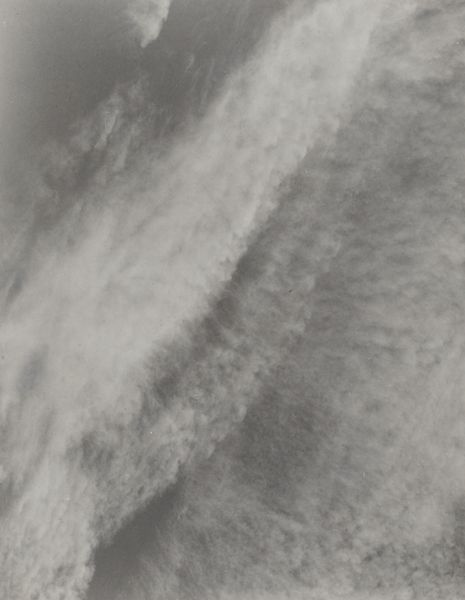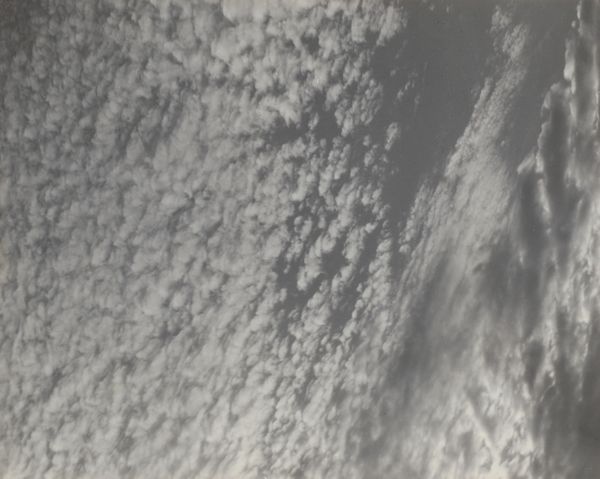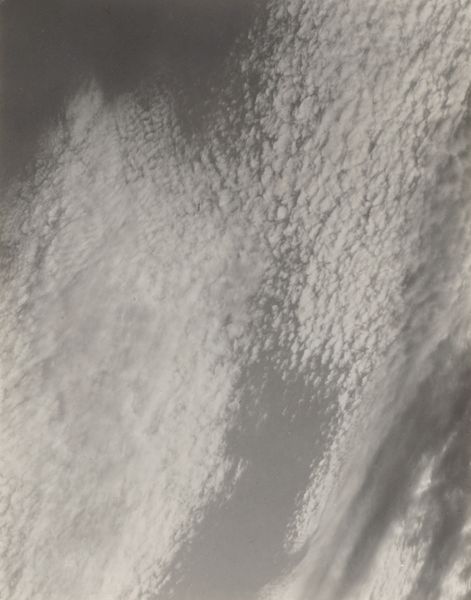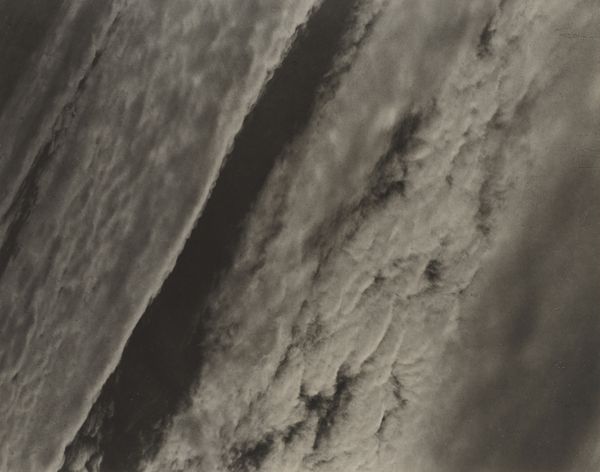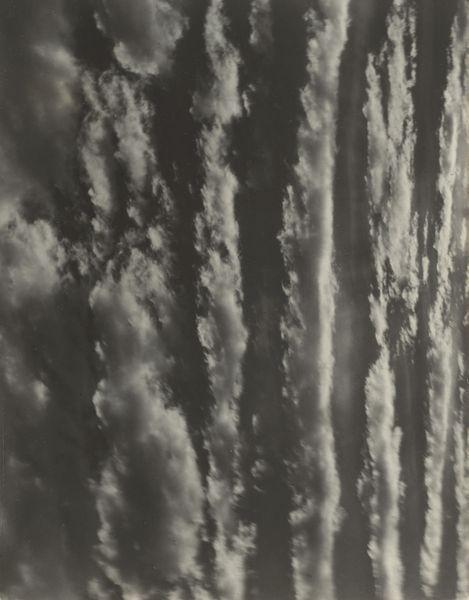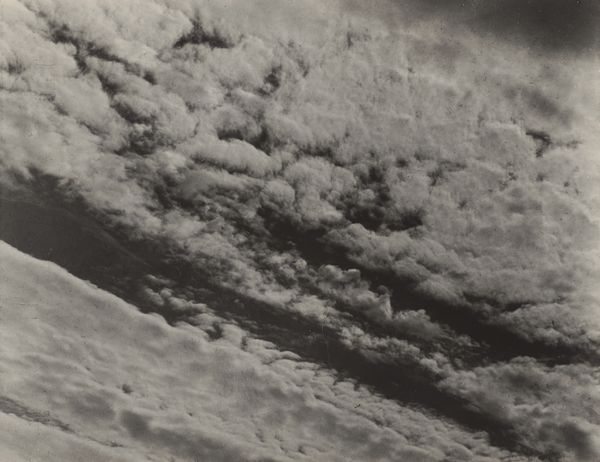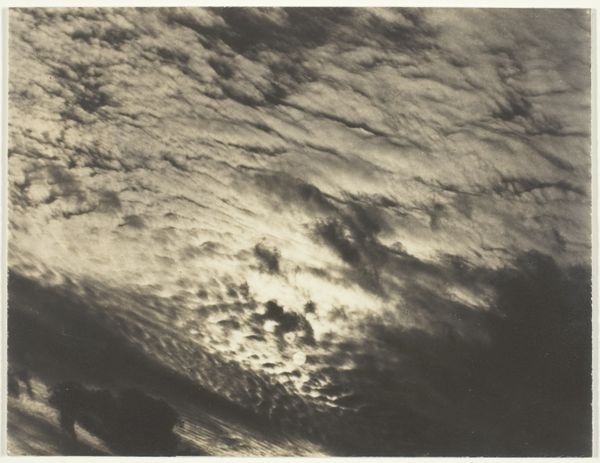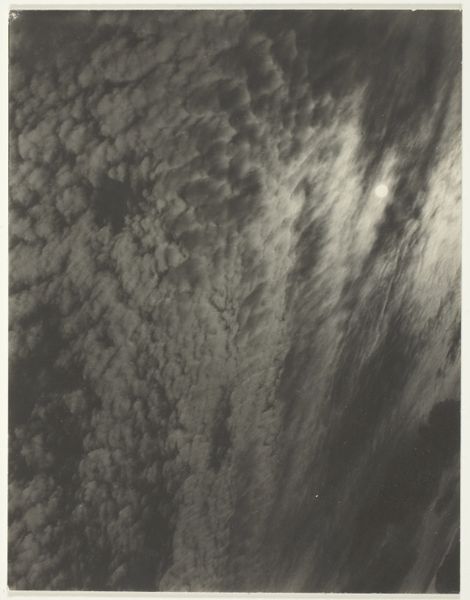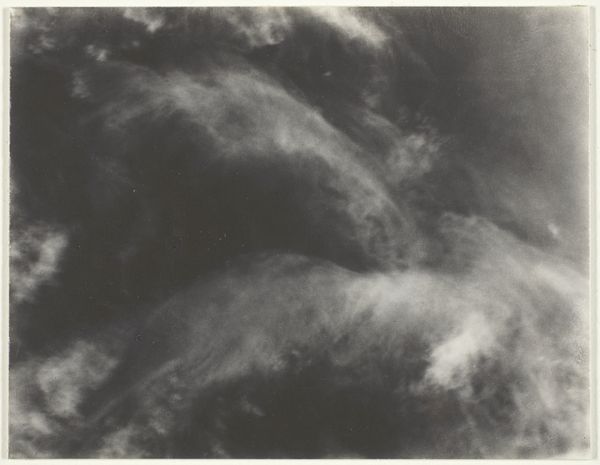
#
cloudy
#
natural shape and form
#
snowscape
#
organic shape
#
sky photography
#
monochrome photography
#
fog
#
shape of cloud
#
mist
#
shadow overcast
Dimensions: sheet (trimmed to image): 11.9 x 9.2 cm (4 11/16 x 3 5/8 in.) mount: 34.2 x 27.3 cm (13 7/16 x 10 3/4 in.)
Copyright: National Gallery of Art: CC0 1.0
Editor: So, we’re looking at "Equivalent," a photograph by Alfred Stieglitz from 1925. It's a black and white image filled mostly with clouds. There’s a kind of stillness, but also a sense of vastness in it. What is it about this image that might connect with the wider cultural landscape of the time? Curator: That’s a great starting point. Stieglitz began these cloud studies in the 1920s as "Equivalents," suggesting they were visual metaphors for inner states. Considering the post-war era, a period marked by disillusionment and the search for new values, what role might these non-representational images play in a society grappling with trauma and uncertainty? Were people ready for that, and how might museums have shaped their perception of photographs? Editor: That’s interesting… It feels like a move away from straightforward representation, like these clouds could symbolize something deeper, more personal, perhaps anxieties or hopes. Did the art world at the time embrace this shift toward abstraction in photography? Curator: Not immediately, and that's key. Photography was still fighting for recognition as a fine art. Stieglitz, through his gallery "An American Place," actively promoted photography alongside painting and sculpture. These cloud studies challenged the prevailing view that photography should simply document reality. Do you see any strategies in how it's composed and presented to enhance its artistic appeal, in a gallery space perhaps? Editor: I see how the tonal range, almost like brushstrokes, adds texture. I guess that elevating photography to the level of fine art would also imply a re-evaluation of museums' roles as cultural authorities. I mean, it really makes you consider what institutions deem ‘worthy’ of display, even today! Curator: Exactly! Stieglitz really forced that discussion about not only the definition of art but who gets to define it. His legacy lives on in how we approach art historical canons and exhibition strategies. Editor: I never thought of clouds as potentially controversial! Thanks, I am definitely leaving here with food for thought. Curator: And that is how we all keep learning.
Comments
No comments
Be the first to comment and join the conversation on the ultimate creative platform.
